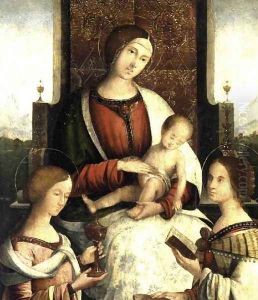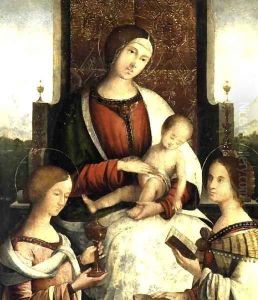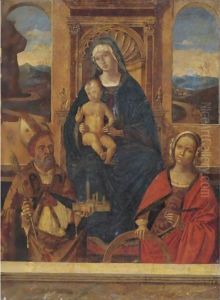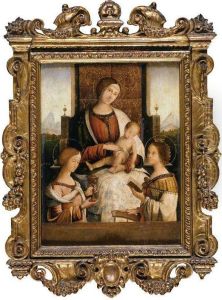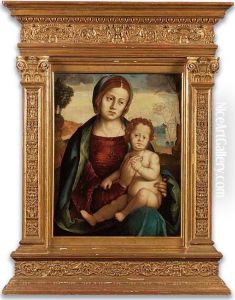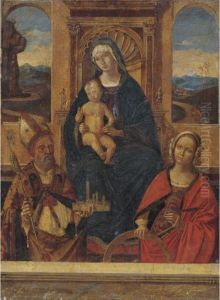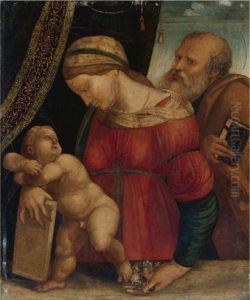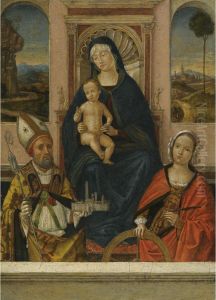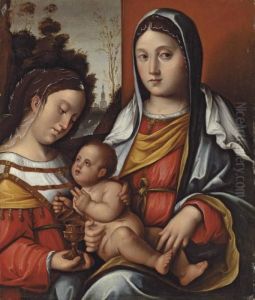Bernardino di Bosio (see ZAGANELLI) Paintings
Bernardino di Bosio Zaganelli, commonly referred to as Bernardino Zaganelli, was an Italian painter born around 1460 in Cotignola, a small town in the region of Emilia-Romagna. He is often associated with his brother Francesco Zaganelli, with whom he frequently collaborated; together, they are referred to as the 'Frères Zaganelli' or 'Zaganelli brothers'. The exact details of Bernardino's life are somewhat obscure, and his individual contribution is often difficult to disentangle from that of his brother, due to their collaborative work and similar styles.
Bernardino was active during the High Renaissance period, a time characterized by significant developments in art, science, and culture in Italy. The Zaganelli brothers worked in a style that was influenced by the great masters of their time, such as Raphael and Leonardo da Vinci, but they also developed a distinctive approach that combined traditional elements of the Early Renaissance with the emerging aesthetics of the High Renaissance.
The Zaganelli brothers' oeuvre includes altarpieces, frescoes, and panel paintings, many of which were commissioned by religious institutions across Italy. Their work is noted for its devotional intensity, clarity of form, and vibrant use of color. One of Bernardino's most famous works is the 'Coronation of the Virgin,' a theme that was quite popular during the Renaissance and one that he executed with a particular grace and solemnity.
Bernardino's career spanned the late 15th and early 16th centuries, a period of great artistic ferment in Italy. He and his brother Francesco contributed to the diffusion of Renaissance ideals beyond the major centers of Florence and Rome, bringing the new style to smaller cities and towns in the Italian provinces. Bernardino's death in 1519 marked the end of a partnership that had enriched the Italian Renaissance with a body of work that, while not as well-known as that of the most famous artists of the time, remains an important part of the era's artistic legacy. His works can be found in various Italian churches and museums, serving as testament to the breadth of Renaissance art and the diversity of its practitioners.
